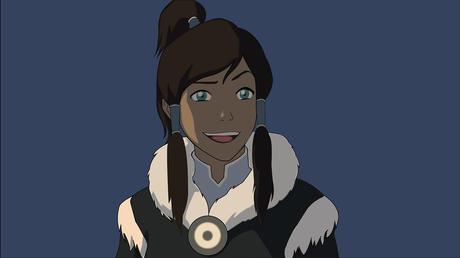
Korra
On December 19th, Nickelodeon released the final episode of the series The Legend of Korra, a fantastical animated series set in a world where four tribes, each of which is associated with an element (earth, fire, water or air), co-exist. In this world some people called “benders” can control only one of these elements while the “Avatar,” named Korra, can control them all. The show was a spinoff from Avatar: The Last Airbender and was originally supposed to run for only two seasons, but became so popular that it was extended to four. The show was popular for many reasons, not least of which is its dedication to depicting diverse characters that represented a range of backgrounds along the lines of race, gender, socioeconomic class, religion and spirituality. Furthermore, the show itself addressed many sociopolitical issues, possibly making it one of the most revolutionary children’s shows of the past few years.
First, Korra defied the tendency of most cartoons to fail to represent racial diversity. For example, Korra, the main character, does not have porcelain white skin. The other benders are also darker skinned and various Eastern heritages are suggested. It’s pretty unusual for an animated show to have many characters of color and this milestone should be recognized.
Korra also disrupts the normative gender roles commonly evident in cartoons by depicting multiple female characters, ranging in ages and occupational roles, who are undoubtedly strong in their own ways. The female characters hardly sit on the sidelines, but actively participate in each episode. Korra herself hardly waits for the other (male) protagonist of the show to defend her, but is rather resilient, bold, and clearly the leader of the two. The show’s co-creator Konietzko admitted in an interview with NPR that:
“Some Nickelodeon executives were worried…about backing an animated action show with a female lead character. Conventional TV wisdom has it that girls will watch shows about boys, but boys won’t watch shows about girls. During test screenings, though, boys said they didn’t care that Korra was a girl. They just said she was awesome.”
In addition to racial and gender-based diversity, the show goes a step further and even comments on various sociopolitical issues. In the fourth season, for example, earth bender Kuvira’s attempts to unite the Earth Kingdom through her army using both military force and metal bending abilities along with her immensely powerful spirit weapon (a weapon of mass destruction) in a way that resembled fascism is called into question. The show has also explored concepts related to inequality and injustice through characters who experience acts of terrorism and PTSD. Spirituality and religion are also explored through a consistent depiction of a spiritual philosophy that emphasizes balance and peace (notably, rather than pushing a specific religion that aligns the characters).
However, arguably the most notoriously diverse aspect of this show was revealed in the closing scene of the final episode. Millions of fans were shocked by this ending, which suggested that the two female protagonists, Asami and Korra, developed a romantic relationship. In the final scene, the two women hold each others’ hands in a way that mirrors Avatar: The Last Airbender‘s ending, in which the heterosexual couple Aang and Katara kiss in the sunset. This was especially surprising to many fans because Asami and Korra had once formed a love triangle with another male character. Yet instead of falling into the trap of pitting these women against each other, the show’s writers had the two women bond over the course of the show, culminating in a shared, suggestive vacation into the spirit world.
Three days later, on December 22nd, co-creator Bryan Konietzko confirmed “Korrasami“. Konietzko stated:
The more Korra and Asami’s relationship progressed, the more the idea of a romance between them organically blossomed for us. However, we still operated under this notion, another ‘unwritten rule,’ that we would not be allowed to depict that in our show. So we alluded to it throughout the second half of the series, working in the idea that their trajectory could be heading towards a romance. But as we got close to finishing the finale, the thought struck me: How do I know we can’t openly depict that? No one ever explicitly said so. It was just another assumption based on a paradigm that marginalizes non-heterosexual people. If we want to see that paradigm evolve, we need to take a stand against it. And I didn’t want to look back in 20 years and think, ‘Man, we could have fought harder for that.’
Konietzko added, ”We did it for all our queer friends, family, and colleagues. It is long overdue that our media (including children’s media) stops treating non-heterosexual people as nonexistent, or as something merely to be mocked. I’m only sorry it took us so long to have this kind of representation in one of our stories.”
Korra may not be the biggest milestone for queer, racial, and gender representation in the media, but, as Konietzko said, it’s a step in the right direction. Other shows, especially cartoons created for young audiences, would do well to follow in Korra‘s footsteps and actively depicted diverse characters and plot lines that reflect a framework of sociopolitical equality.

